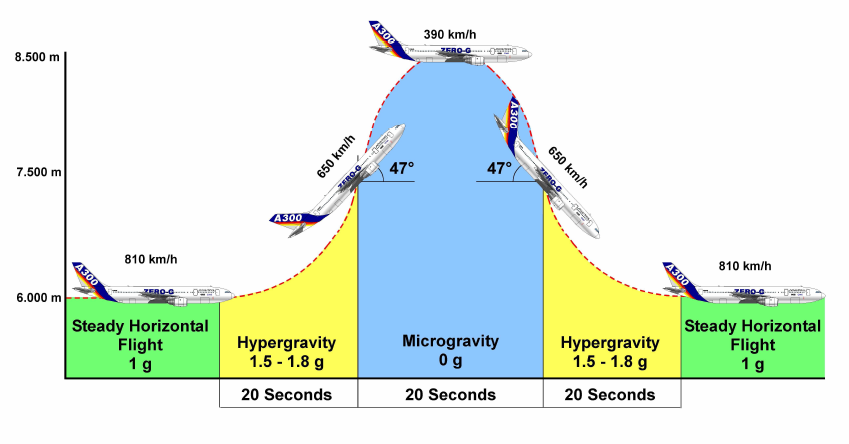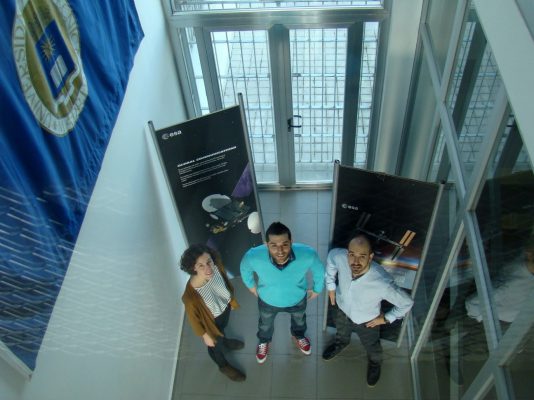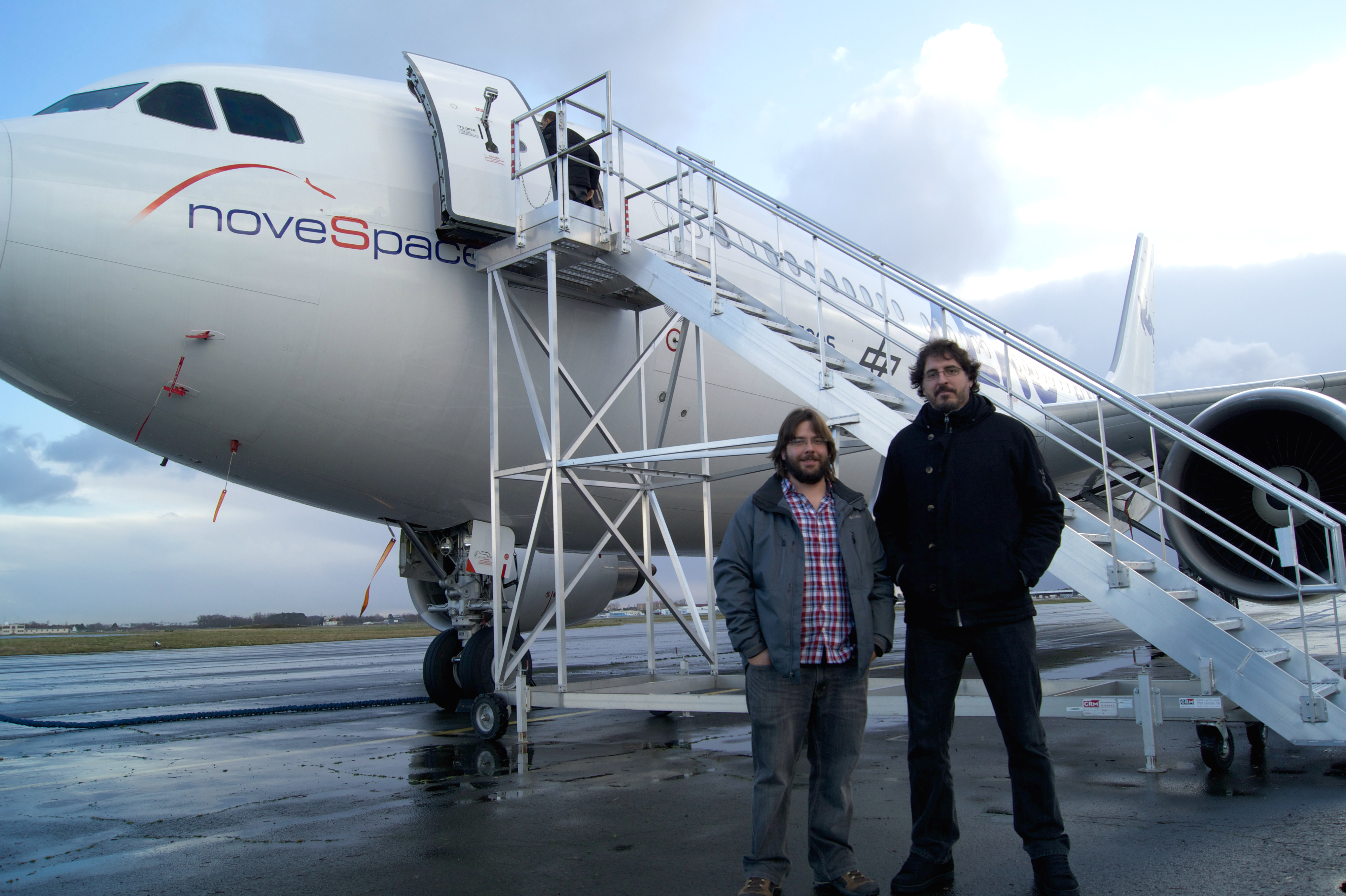As a gateway to space, the European Space Agency (ESA) promotes educational an scientific programs that provide benefits to European an worldwide citizens. The Fly Your Thesis! Program by the European Space Agency ‘s Educational Program is one of them. After a period of inactivity, it will be back to provide the opportunity for master and PhD students to try their experiments in a microgravity environment.
Gravity is the great force of nature that keeps us with both feet on ground. One way to cancel out its effect is by experiencing a parabolic flight. In these flights, pilots perform a complex maneuver in order to trace the trajectory of a parabola, during this movement the occupants of the plane experience a feeling of weightlessness for 20 seconds.

Source: ESA
On this occasion, 18 projects applied for 4 seats in the Airbus A310 Zero-G, plane bought and adapted by Novaspace (a subsidiary of the French space agency) that will make the parabolic flight. Seven groups were selected to present their proposal to a jury composed of ESA engineers, scientists and Novaspace engineers. From the four teams finally selected two are from the E-USOC, a center of the Escuela Técnica Superior de Ingeniería Aeronáutica y del Espacio (ETSIAE) at the Universidad Politécnica de Madrid. Both projects have been developing for a long time and now, thanks to this opportunity, they can be tested in microgravity conditions.
TEPiM (Thermocapillary Effects in PCMs in Microgravity)
The TEPiM project tests the improvement of heat transmissions in PCMs (Phase Change Materials) while they are been melting in microgravity conditions in the presence of an air layer. This layer allows the Marangoni Effects to take place, which creates a motion flow which allows heat transmission by convection.
PCMs are materials with a high latent heat which can be used to store and release large amounts of energy respectively during the solid-liquid and liquid-solid transitions. For instance, they are used in passive control systems in order to prevent certain electrical systems reaching temperatures outside their range of operation.
The team is composed of Andrés Cobos Usano and Jose Miguel Ezquerro Navarro, both PhD candidates in Aerospace Engineering, Almudena Calleja, studying a Master’s Degree in Aerospace Engineering, and Pedro Mongelos, studying Aeronautical Engineering, all of them in the ETSIAE. They have been working on this project for a year and a half, and they will continue until the flight will take place this autumn 2016.
From left to right: Almudena Callejo, Andrés Cobos Usano and Pedro Mongelos. Source: E-USOC
CFVib (Control of Fluids in Microgravity with Vibrations)
The CFViB project studies the effect of high frequency and small amplitude vibrations in liquids in a weightless environment. These liquids are stored in containers of different shapes (cylindrical and parallelepiped).
In this case, the vibrations are created through piezoelectric, because they are smaller than commonly used vibrators and their frequency range can be very wide (from 1KHz to 1MHZ). The goal is to know whether it is possible to use these devices to control fluids in containers when they change their position and shape, and therefore, if they can be used as active systems to control liquids such as fuel or water in space missions.
The group has a wide experience in the behavior of vibrated fluids, and have achieved significant result in this field of research. The performance of this experiment will allow the team, whose members are Jose Javier Fernández, a PhD candidate in Aerospace Engineering at ETSIAE, and Pablo Salgado, a Master’s Degree in Aeronautical Engineering student at ETSIAE too, to test their theoretical results in a microgravity environment.
José Javier Fernández, José Miguel Ezquerro and the A310 Zero-G plane in the background. Source: ESA



